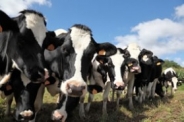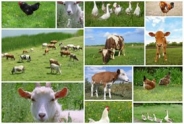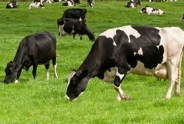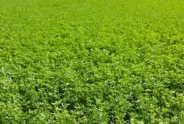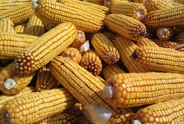Leasing Land for Agriculture
Joan Sinclair Petzen, Farm Business Management
Northwest New York Dairy, Livestock & Field Crops
August 8, 2014
Dairy farms in Western New York typically rent 45 percent of the acreage on which they grow crops. Dairies in this region typically spend about $65,000 annually for real estate rental costs. Cropland is the most frequently rented resource. Sometimes, particularly start-up operators, rent a whole farm including land, buildings and barn equipment. Some maple syrup producers rent nearby sugar bushes to increase their production capability. Vineyard owners, who do not produce grapes, sometimes rent established vineyards to neighbors who are currently growing grapes.
Several factors influence the rental rates paid for cropland. The productive capacity of the land is the most significant factor determining rental value. Well drained, valley floor soils command a higher rent than more poorly drained hilltop or hillside fields. The availability of land in a local area is another key factor influencing rental rate. In a neighborhood where there are several active farm operations, rental rates tend to be higher than in another area where there is less active farming. When renting pastures, a key consideration in arriving at a fair rental rate is the condition of the fences and who is responsible for their upkeep.
A lease agreement transfers certain rights to the use of land, buildings, and sometimes equipment or livestock from the owner (lessor) to the renter (lessee). A well-written lease should:
1. Accurately describe the property involved in the agreement.
2. Clearly outline the responsibilities of both parties as to:
a. Payment of taxes (usually the owner)
b. Payment of insurance on buildings (usually the owner)
c. Payment of insurance on crops, contents of buildings and house (may be either, usually the owner of the contents)
d. Payment for major repairs and improvements of a permanent nature (usually the owner, as it is his or her property that is being maintained and protected. Such repairs and improvements normally include roofing, fencing, painting, water systems, reforestation, etc.).
e. Reimbursement at lease termination for unused benefits of lime, and other semi-permanent or permanent leasehold improvements made by the tenant.
f. Responsibility for normal upkeep or minor repairs and major repairs and improvements are carefully spelled out. (Frequently, the lease specifies that the landlord purchases the supplies and the tenant provides the labor for repairs.)
g. Maintenance and establishment of fences. (Frequently, the owner supplies the materials and the renter the labor.) Responsibility for boundary fences is usually written into state laws.
h. Kind, amount, place, and time of payment of rent and penalties attached for failure to pay in a timely manner.
i. Length of the lease and provisions for canceling, changing, and/or renewing the lease.
3. State the specific rights of both parties to use of the land and improvements. The owner enjoys the right of entry and inspection but may seek additional rights, such as hunting, use of water from a well, timber for firewood or access to certain building for storage purposes; but the tenant has general possession, unless otherwise provided.
4. Include provisions concerning arbitration in case of disagreement, penalties for breaking the lease, the right or withholding of the right of the tenant to sublet, provisions for surrendering the property at termination of the lease, agreement by the tenant to commit or permit no waste or depletion, any privilege of the tenant to have first option to purchase the property and other provisions to which both parties agree.
Cash rental of farmland is common practice in the Northeast. Rent is either established as a fixed payment or tied to crop yields, like a certain amount per bale of hay or bushel of corn. Share-rental agreements involve joint contributions to production expenses and sharing of the returns according to agreed upon proportions. Generally, the returns are shared in proportion to each party?s contributions. In cash crop operations, often the landlord receives a share of the crop produced to market as he or she chooses.
To determine the rental charge, the landlord must know their ownership costs. These costs include depreciation (for buildings or equipment), property taxes, insurance and maintenance of buildings and equipment in operating condition. The tenant needs to know their costs of production and the return they expect from rented property to be able to determine how much rent they can afford to pay. Once each party has determined their costs, the negotiation of a rental rate can begin.
Local market conditions must also be taken into consideration. Talking with neighbors and learning how much they are receiving or paying for rent in your local area is probably the best method for assessing the local market. In Western New York, cropland rental rates range from keeping hay fields mowed to over $200 per acre for cropland depending upon the quality and competition for land. Sometimes owners who want some hay for their own use will rent their field for one-half of the production. In this case, the renter is responsible for mowing, raking, and baling the hay and putting the landowner?s share in a designated storage space.
Sugar bush rental is usually paid on a per tap basis, ranging from trading for some syrup to $0.50 per tap for prime roadside trees. Recent reports of sugar bush rental rates are $0.50 +/- per tap depending upon the number of taps and density of the stand.
Building rental is usually rented on either a per square foot or per stall (for livestock buildings) basis. Often when buildings are rented, utilities are involved. It is important to designate how the utilities will be paid for and by whom. Building rental rates, are highly variable depending upon whether the technology employed is current or obsolete, the condition or level of repair of the building, and whether it is fully equipped or not.
In areas where competition for land is keen, a landowner may benefit by advertising their property and taking bids from interested farm operators. It is important to note that other terms of the rental contract may be just as important as the cash rent being offered in the decision of to whom to rent. Landowners need to identify a tenant who will use the land and a manner that is in keeping with their goals for the property.
Renting land for agricultural production can help a rural landowner maintain their landscape in working condition while receiving some return for their investment. Using a written rental agreement assures a clearer understanding of both the landlord and the tenant?s responsibilities. When each party knows their costs associated with the agreement, it is easier to arrive at fair rental price taking local market conditions into consideration.
J.G. Cooper, The Pennsylvania State University; G.V. Eagan, West Virginia University; W.A. Knoglauch, Cornell University; "Guidelines for Renting Farm Real Estate in the Northeastern United States;" 1985.
Upcoming Events
Small Ruminant Parasite Management and Husbandry
May 31, 2025 : Small Ruminant Parasite Management and Husbandry
Warsaw, NY
Learn about internal parasites of sheep and goats. Participation in the day will earn FAMACHA© certification.
Announcements
Follow us on Instagram
See photos and reels of our most recent events and programs!Join us on Facebook!
Follow us on Facebook to get up to date posts about events, workshops and everything NWNY!Add us on LinkedIn!
Connect with us on LinkedIn to get more information about upcoming workshops and programs!

